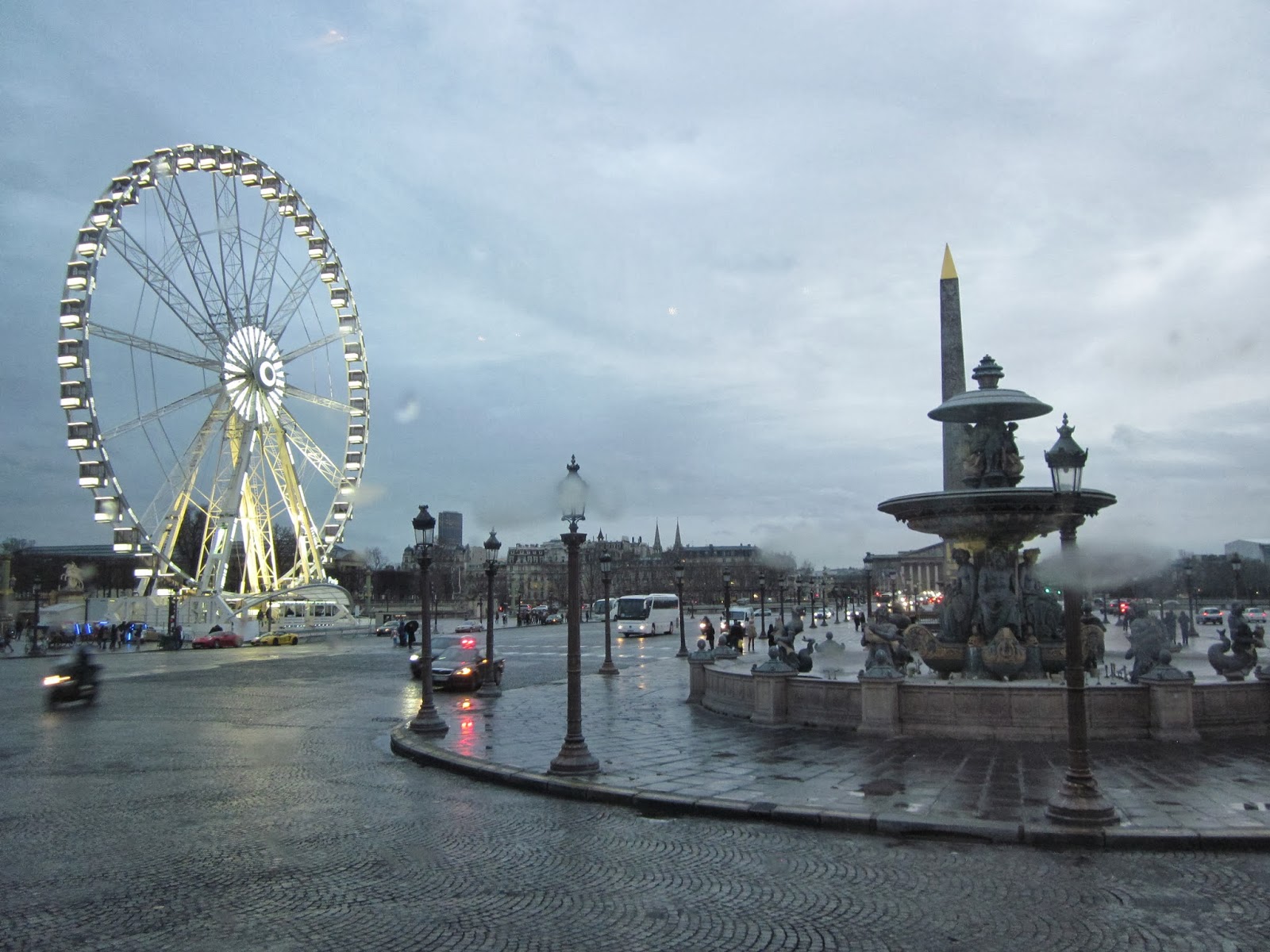February
is the shortest month of the year and this year it was the busiest. I took part
in occupational mobility program “Modern models of career guidance
for students on the example of Germany and France”.
 During
this program with the
group of teachers we visited some European countries and examined
career guidance at the establishments of education.
During
this program with the
group of teachers we visited some European countries and examined
career guidance at the establishments of education.
In
Berlin we were informed about Germany's Dual System of vocational education and training at Senate Department
for Education, Youth
and Science.
A dual
education system combines training in
a company and vocational
education at
a vocational
school in
one course. Dual system of education means building career education
into the curriculum and linking it to students’ overall
development.
 Berlin
is a unique city and has many different cultural layers and a lot of places of interest. We had a guided city tour in Berlin and saw
the most beautiful sites: Unter den Linden (street under the linden trees), Potsdamer Platz,
TV-Tower, Red City Hall, Victory Column. We also visited some
exciting places in Berlin: Berlin's Museum
Island, Reichstag, Berlin Wall (East Side Gallery), Brandenburg Gate
and some other. It was awesome!
Berlin
is a unique city and has many different cultural layers and a lot of places of interest. We had a guided city tour in Berlin and saw
the most beautiful sites: Unter den Linden (street under the linden trees), Potsdamer Platz,
TV-Tower, Red City Hall, Victory Column. We also visited some
exciting places in Berlin: Berlin's Museum
Island, Reichstag, Berlin Wall (East Side Gallery), Brandenburg Gate
and some other. It was awesome!
Then
we visited BKWB
(Berufskolleg Werther Brücke). It’s a college of vocational
training and higher professional education in the heart of Wuppertal,
North-Rhine Westphalia, Germany.
Career
guidance plays a key role in helping students decide on a job or a
course, to the broader development of career management skills.
At BKWB students are taught in the fields of mechanical
engineering and business studies and ICT. The main educational goal
is to convey the necessity and usefulness of abilities such as:
conflict management, presentation techniques, communication skills,
intercultural competence, self-management, planning and organisation,
consciousness for values.
The
College has modern well-equipped
laboratories, workshops, and computer-rooms where students are
introduced to performing the different tasks.
Training at this college motivates the students to
achieve their best and they improve the chance on the labour
market.
 Later
we had an excursion to one of the most beautiful cities of
North-Rhine Westphalia to Cologne. The greatest city attraction is Cologne
Cathedral. This church
is really amazing! We also had a foot tour to the old town with the
Rhine panorama. During World War II more than 70 percent of the city
area of Cologne was destroyed and later it was completely rebuild.
Later
we had an excursion to one of the most beautiful cities of
North-Rhine Westphalia to Cologne. The greatest city attraction is Cologne
Cathedral. This church
is really amazing! We also had a foot tour to the old town with the
Rhine panorama. During World War II more than 70 percent of the city
area of Cologne was destroyed and later it was completely rebuild. Next
day we went to France.
France has also a very singular approach in the educational system.
The French
educational system is
highly centralized and organized. Education is the expression of the
project of the French nation.
Next
day we went to France.
France has also a very singular approach in the educational system.
The French
educational system is
highly centralized and organized. Education is the expression of the
project of the French nation.
We
had a very interesting seminar at Ciep (Centre international d’etudes
pedagogiques) in the city of Sevres. We were informed about
educational system in France, stages of education and their
peculiarities and so on.
Schooling
in France is
obligatory at of age 6, the first year of primary school. A big
difference is evident at the primary school. Many parents start
sending their children earlier to school, e.g.
20% pupils go to school at the age of 2. A key role plays a
philosophical vision promoted by the French revolution.
 The
Centre of Pedagogical Studies is
situated in the building of former Royal Porcelain Manufactory in
Sevres not far from Paris and Versailles. So, after the Ciep we went
to the Palace of Versailles – the Royal residence of French kings
from the time of Louis XIV to Louis XVI. Nowadays it’s a one of the
greatest tourist centres in France.
The
Centre of Pedagogical Studies is
situated in the building of former Royal Porcelain Manufactory in
Sevres not far from Paris and Versailles. So, after the Ciep we went
to the Palace of Versailles – the Royal residence of French kings
from the time of Louis XIV to Louis XVI. Nowadays it’s a one of the
greatest tourist centres in France. In
Paris we spent three unforgettable
days. First we saw Paris at night from Seine river cruise. There
are so many places to visit in Paris!
In
Paris we spent three unforgettable
days. First we saw Paris at night from Seine river cruise. There
are so many places to visit in Paris!
We did the triumphal way from the Louvre Museum to Tuileries, Place de la Concorde, Champs Elysees, up to Arc de Triomphe. We visited the most prominent places of interest such as Louvre, The Eifel Tower, Notre-Dame de Paris. We also had a walking tour of Montmartre, where we visited famous places, and especially I was impressed by the church of Sacre-Couer.
I
am grateful to the International Affairs Centre (Minsk) for
organizing the mobility program and the trip to the most interesting
European cities.





Oksana, it was amazing trip!
ОтветитьУдалитьI really enjoyed every moment being there!
Удалить